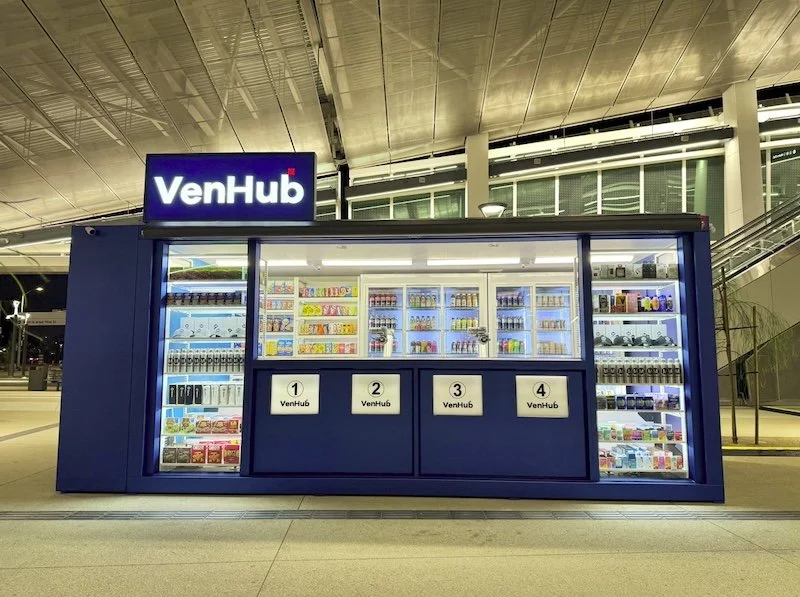Black Friday Q&A: Harriet Green, General Manager, IBM Watson Customer Engagement, Internet of Things & Education
RTIH: Can we expect a record breaking Black Friday/Cyber Monday weekend this year?
Harriet Green: Well, it certainly looks to be another record-breaking season. But there is more to the story than simply looking at whether sales are up or down. Using new types of data sources, such as weather and footfall traffic, we can uncover fascinating patterns about shoppers. Here are a few of our predictions:
· On average, US shoppers are predicted to travel 4% further on Black Friday to shop in physical stores than they do on typical weekends. However, there is a consistent regional and weather-related pattern with respect to how much further consumers are willing to drive on Black Friday compared to an average weekend.
· Apparel is expected to be the big winner in luring Black Friday bargain hunters outside of their typical shopping areas with shoppers being willing to go an average of 7% further.
· Department stores come in second place with shoppers expected to travel 6% further than a typical weekend on Black Friday.
I’m excited to watch these predictions and countless other weather and non-weather-related factors over the holiday weekend. I look forward to seeing what insights the data will give us about what’s in store for retailers for the remainder of the holiday shopping season and beyond.
RTIH: What will be the key retail trends this holiday season?
HG: The way today’s smarter, more connected and empowered consumer – Generation Z in particular – interacts with retailers is the top trend I’ll be watching this holiday season. I’m fascinated by how their interactions are redefining the retail landscape. How retailers respond to these consumers’ needs will play a big role in success this holiday season. Here are three things our indicators show will be important to watch:
Bricks and mortar retail renaissance: On the one hand, online sales are forecast to rise 12.2% compared to last year. And on the other, we’re also seeing a surprising trend towards shopping in physical stores—a recent IBM study found that Generation Z shoppers, with $44 billion in purchasing power, overwhelmingly prefer to shop in store. Simply put, people are shopping across all channels and there are exciting opportunities for retailers to create new interactive experiences and build new relationships with new customers.
Greater demand for personalisation: 30 years ago, the owner of my local corner shop knew each customer by name and kept a mental note of the items our family members picked up each week. This knowledge gave him a unique view into the kinds of gifts we might shop for during the holidays and informed the recommendations he could make. Our recent predictions show that 52% of female Generation Z consumers demand tools that allow them to customise products. It also reveals that 43% of female and 40% of male consumers want the ability to design products that no one else owns – imagine personalising a jewelry box for your daughter, that you can custom-create and 3-D print on demand.
Digitising supply chain document flows: What better way to exceed shoppers’ expectations than with early deliveries and inventory that’s just right? Savvy retailers are keeping a close eye on their digitized supply chains and tracking customer orders as they make their way through the lifecycle - from search to purchase to delivery in real-time. Setting up for business in this way gives retailers an edge - they can make informed decisions, respond quickly, improve performance, gain new data insights and deliver information flows efficiently across their entire supply chain with accuracy and transparency. Digitising the business is key to thriving in the face of disruption, as it gives supply chain professionals the ability proactively spot potential issues and take action, making the disruptions we experience today a thing of the past.
RTIH: What are the key challenges retailers will face during Black Friday and beyond?
HG: Personally, I think the single biggest challenge retailers face during Black Friday and beyond is making sure they don’t miss the opportunities that abound. Yes, the retail industry is experiencing unprecedented disruption, but the smart, AI, data-driven technology that enables retailers to capitalise on these disruptive forces is everywhere. The 2017 IBM Customer Experience Index (CEI), which identifies the brands that are providing leading shopping experiences and how they’re doing it, found that brands do need to work harder to meet consumer expectations. To thrive today, retailers must move beyond the old-fashioned “fast follower” mentality. Here are two ways they can do this:
- Immersive omnichannel: Retailers need to be where their customers are, more than ever before! Consider that over 60% of people follow a brand on social media before making a purchase, and that 72% of Instagram users have purchased a product they saw on the app. Using channels like Facebook, Instagram, Pinterest and Snapchat to understand and influence today’s shoppers is the essential next step. For example, with innovations like Instagram’s ‘shop now’ button, retailers can engage with today’s enthusiastic fashion Instabloggers who are telling brand stories in new ways and sharing ‘outfits of the day’ as well as limited availability coupon codes on Snapchat. Retailers must all embrace these types of opportunities.
- The wonder of weather: The weather is a constantly evolving force – each weather pattern has a unique impact on buying behaviours, and retailers who apply AI technologies to their business stand to avoid the retail equivalent of a ‘Michael Fish moment.’ It’s counter-intuitive not to display umbrellas in a prominent position on the shop floor when it’s raining cats and dogs – with access to weather data, retailers can adapt their promotions, switch up their displays and showcase the most appropriate merchandise they have for the weather at any given moment, with speed and agility. Retail today, much like any other business, is about creating opportunities to win and weather insights offer huge opportunities to drive sales.
RTIH: Could you give some examples of how retailers are turning to technology including AI, IoT and VR to help them engage consumers?
HG: More than ever before, retailers are turning to new and emerging technologies such as the Internet of Things (IoT), cloud, AI, and VR with the goal of creating compelling customer experiences that can drive new efficiencies, opportunities and innovations. For example:
- AI concierge: We all know what Black Friday is like in the store, it can feel like pandemonium. It’s not easy to deliver the timely and personalised customer service retailers want to deliver. Imagine if retailers had a helping hand when a customer walked into a looking unsure of where to find what they needed? Say an in-store robot read their emotions based on their facial expressions, offering assistance by asking what they were looking for, checking stock availability and guiding them to the product on the shelf? An AI concierge can also sense if a customer’s coat is too thin for the weather and direct them to warmer clothing – just imagine automating the upselling process like this!
- Frictionless shopping with IoT: With eight in ten consumers checking their phones in-store before making a purchase, it’s clear there’s a need to streamline the in store-online shopping experience. Now, when a customer falls in love with a pair of shoes, which are out of stock in her size in store, all she needs to do to check online stock availability is take out her phone.
- Virtual reality shopping in the comfort of your own home: Today, that’s no longer as far-fetched a concept as it might seem. In fact, that vision of tomorrow is happening today. Now, from the comfort of their living rooms, consumers can walk down aisles of virtual stores, checking out the various goods on display and putting their selections into virtual baskets.
RTIH: Looking ahead to 2018, customer-obsessed, data-driven retailers will thrive next year, according to Forrester. Would you agree and how can traditional retailers overcome issues related to their siloed organisation structures?
HG: Consumer demand for customised shopping experiences is here to stay. We predict that nimble retailers who transform their businesses using the data insights available to them are poised to capitalise on this trend. It’s truly remarkable that only 20% of the world’s data is searchable. Where’s the 80%? It’s unstructured and hiding in organisations. AI technologies can find and analyse that data to give retailers a clearer picture of their target consumer, tap deeper into their needs and shed light on their buying behaviours to drive engagement and increase performance. And this transformation isn’t the culmination of an arduous journey. With literally the flip of the switch businesses can:
- Connect data across all parts of the business to create an immersive and cohesive picture of the omnichannel customer journey.
- Combine the best parts of in-store and online shopping experiences to simplify customer journeys and inspire loyalty.
- Outsmart the competition with in-the-moment customer insights and pricing recommendations that catalyse conversions.
- Engage shoppers with new, innovative capabilities that show them they are understood and valued with personalised, seamless experiences, in-store and online, that inspire them to buy.
- Shine a light on any emerging challenges with transactions, purchases and deliveries and address them before they are escalated to customer service departments.
As consumers, next time we shop, let’s just imagine the professionals working hard to make our shopping experiences simpler, more delightful and more personalised, with the help of all the technology and data behind the scenes.










Continue reading…